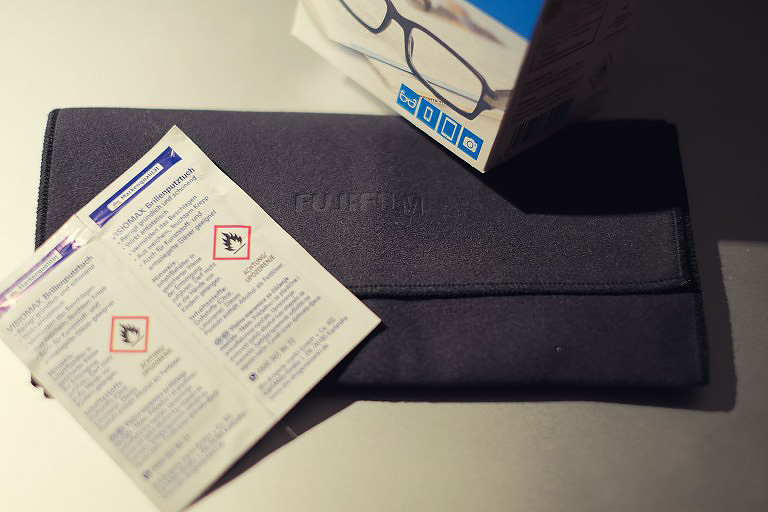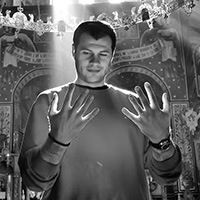5 pieces of gear I carry in my photo bag
In one of my previous articles, I wanted to write about the content of the photo bag, but in fact, this is a continuously changing configuration. We carry what we have, what we need (or might need) and what we use, according to our style and needs in photography.
For obvious reasons we will skip the “camera and lenses” and we’ll focus on some accessories and other stuff that might be useful when traveling with your photo bag.
Remote Control
 When I need to do long exposure shots, or landscape photography, or some shots in low light conditions, the remote control works perfectly hand in hand with the tripod. Of course, the lack of a tripod can be dealt with by using some other techniques. As long as the camera is perfectly steady and there is no need to touch it, the remote control (it can be wireless, or by wire) is very useful when you have longer exposure times. Also, the lack of a remote shutter controller can be solved by using the camera in Timer Mode (2, 10 seconds), but I find it more comfortable to have the remote control, instead of changing the Timer function all the time.
When I need to do long exposure shots, or landscape photography, or some shots in low light conditions, the remote control works perfectly hand in hand with the tripod. Of course, the lack of a tripod can be dealt with by using some other techniques. As long as the camera is perfectly steady and there is no need to touch it, the remote control (it can be wireless, or by wire) is very useful when you have longer exposure times. Also, the lack of a remote shutter controller can be solved by using the camera in Timer Mode (2, 10 seconds), but I find it more comfortable to have the remote control, instead of changing the Timer function all the time.
Spare Batteries
 You don’t know how long you could be out there and it is always better to be well prepared. The only thing I miss from my DSLR, since I’ve made the switch to Fujifilm mirrorless cameras, (4 – 5 years ago) is the great autonomy of their batteries. I had a semi-pro level DSLR with APS-C sensor and its battery lasted for more than 1000 shots. With Fuji, I need 3-4 batteries to be sure I could match this performance. Let’s not forget that when you photograph in winter, the cold will surely affect the performance of your batteries. The best thing to do is to have extra batteries and to keep them warm, in a pocket close to your body.
You don’t know how long you could be out there and it is always better to be well prepared. The only thing I miss from my DSLR, since I’ve made the switch to Fujifilm mirrorless cameras, (4 – 5 years ago) is the great autonomy of their batteries. I had a semi-pro level DSLR with APS-C sensor and its battery lasted for more than 1000 shots. With Fuji, I need 3-4 batteries to be sure I could match this performance. Let’s not forget that when you photograph in winter, the cold will surely affect the performance of your batteries. The best thing to do is to have extra batteries and to keep them warm, in a pocket close to your body.
Extra Memory Cards
 It is good to have extra memory card, for reasons of space, when you need more, or backup, it your card inside the camera might fail. And they do. The internet has some advice for you, how to deal with corrupted memory cards and how to avoid corrupting them. The most important thing is to never delete photos in-camera from your memory card. If you do this because you need to free some space, then you have more reasons to have extra memory cards. The safest way is not to delete anything from the card; copy everything onto your PC, then you can delete anything you need, from your saved folder on your PC. Format your memory card and it is fresh and ready for your next photo session.
It is good to have extra memory card, for reasons of space, when you need more, or backup, it your card inside the camera might fail. And they do. The internet has some advice for you, how to deal with corrupted memory cards and how to avoid corrupting them. The most important thing is to never delete photos in-camera from your memory card. If you do this because you need to free some space, then you have more reasons to have extra memory cards. The safest way is not to delete anything from the card; copy everything onto your PC, then you can delete anything you need, from your saved folder on your PC. Format your memory card and it is fresh and ready for your next photo session.
Cleaning Stuff
 A microfiber cloth takes very little space in your bag, but it is useful. Also some eyeglasses cleaning wipes are also good, for the lenses, filters, LCD screen and viewfinder eyepiece. No need to go on with blurry, hazy glass.
A microfiber cloth takes very little space in your bag, but it is useful. Also some eyeglasses cleaning wipes are also good, for the lenses, filters, LCD screen and viewfinder eyepiece. No need to go on with blurry, hazy glass.
Filters
 I use a few filters, the screw-on type (they fit only a certain diameter, but they are more comfortable). There are many types of filters in different shapes, sizes and for different purposes, from the basic lens protection to special effects filters. For now, I only use 3 types of filters and their optical quality is essential (why having a very expensive lens with amazing IQ, only to put a cheap filter over it?). I use UV filters, great for lens protection (better to have a broken filter, that you can replace, than to have a broken lens), Circular Polarizer filters, great to use in sunlight for landscape photography and the Neutral Density filters, or ND, that reduce the intensity of the light, in order to achieve special effects for the long exposure photography. Usually when you say “ND filters”, you also consider the tripod and the remote control.
I use a few filters, the screw-on type (they fit only a certain diameter, but they are more comfortable). There are many types of filters in different shapes, sizes and for different purposes, from the basic lens protection to special effects filters. For now, I only use 3 types of filters and their optical quality is essential (why having a very expensive lens with amazing IQ, only to put a cheap filter over it?). I use UV filters, great for lens protection (better to have a broken filter, that you can replace, than to have a broken lens), Circular Polarizer filters, great to use in sunlight for landscape photography and the Neutral Density filters, or ND, that reduce the intensity of the light, in order to achieve special effects for the long exposure photography. Usually when you say “ND filters”, you also consider the tripod and the remote control.
Extra accessory: the smartphone. Well, you have the smartphone on you by default, I guess, but the reason why I would include it here as an essential piece of equipment is simply related to its “smart” capabilities that also apply in photography. Let’s name a few of them, but the list could go on with other things:
- A second camera. I wouldn’t consider my smartphone as a backup camera, but using its camera to record a journal of your travel itinerary could be useful;
- A note pad. I use Evernote app to write my notes and everything is synchronised with the app installed on my PC. Also, using its mic, you could have a sound recorder; too, if you prefer to speak, instead of writing your notes.
- Remote control for your camera, via Wifi, or Bluetooth apps. Some of the latest cameras have built-in Wi-Fi and/or Bluetooth and you can replace your remote shutter controller with your smartphone, where you have access to a Live View image and can modify some of the camera settings, like aperture, ISO, exposure compensation, switch from Photo Mode to Video Mode and some other features, depending on each camera manufacturer and model;
- On-the-go backup drive. The same app that remotely control your camera, could also store your photos, transferred to its memory via Wi-Fi link between the camera and the smartphone;
- GPS and maps. To know your way, or to geo-tag your photos;
- ND Filter Exposure Calculator. There are some great apps to help you calculate when dealing with long exposure photography and ND filters;
- Light Meter. I only use this when dealing with old film cameras that do not have a built-in light meter.
There are many more other accessories for each photographer, but since I switched from a DSLR to a mirrorless camera, the size and weight of my photo bag were considerably reduced. I wanted to share with you my top 5 most important accessories that are essential to have in my bag. Sometimes, less stuff could mean more freedom, as I start to enjoy this feeling, as a photographer, more and more, lately. May the Light be with you!
JOIN OUR FACEBOOK GROUP

“My name is Sebastian Boatca, a photographer based in Brussels, Belgium and I embrace life through my experiences as a man, husband, father, traveler and photographer. The artistic expression is one of the ways we can blend into nature strings and communicate with the people around the world.”




